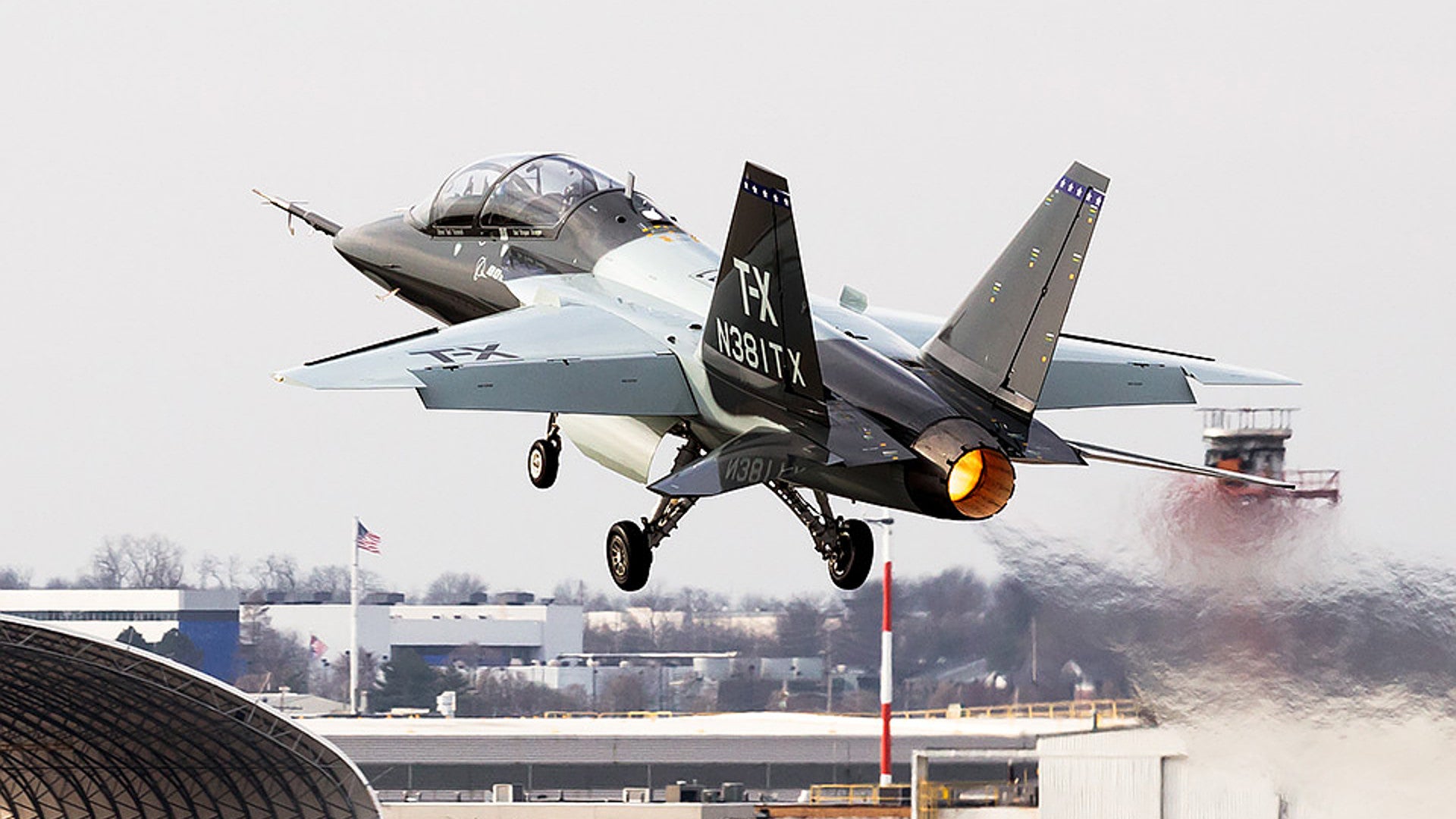Boeing, along with its partner Saab, has just won out big in securing the U.S. Air Force’s long-awaited T-X jet trainer contract. Now, additional, more specific details have emerged that shed more light on the service’s plans and what the Chicago-based planemaker does and doesn’t stand to gain from the deal.
The Pentagon released a number of relatively detailed specifics about the deal in its daily contracting announcement on Sept. 27, 2018. The Air Force offered further information in its own statement and in comments to reporters, according to Defense News. At present, the Air Force expects to purchase just over 350 T-Xs to replace its existing T-38 Talons, as well as 46 simulators and other items.
Here’s what we know now:
- The Air Force expects to purchase 351 T-X aircraft, also known as Advanced Pilot Training aircraft, as well as 46 simulators, and additional parts and services.
- This is a so-called “indefinite-delivery/indefinite-quantity” contract and under the existing terms, the Air Force could potentially order as many as 475 planes and 120 simulators.
- The contract would only hit its full $9.2 billion value if the Air Force exercises all of its options and buys that larger number of aircraft.
- Around $813 million of the $9.2 billion contract covers building five pre-production examples of the planes and seven simulators.
- After that, the Air Force could buy the aircraft in two low-rate initial production lots, followed by at least eight lots of full-rate production, for a total of 10 lots.
- The contract starts out as a fixed-price deal with certain incentives, but transitions to a firm, fixed-price arrangement when the fifth lot of total production starts.
- The Air Force says this structure helped it trim the total cost of the program down from the original estimate of $19.7 billion.
- Boeing and Saab will perform the majority of the work at facilities in St. Louis, Missouri.
- The contract covers work, including the expected delivery of 351 aircraft, through 2034.
- The Air Force expects the first simulators will arrive at Joint Base San Antonio-Randolph in Texas in 2023.
- The service’s target date for reach initial operational capability with the T-X is 2024.
This follows a trend in both Air Force contracts and Boeing’s recent string of significant successes in offering aircraft to the U.S. military as a whole. Until recently, the Chicago-headquartered planemaker’s last major contract award from the Air Force had been for the KC-46A tanker, program that has proven to be vexing for both parties, which you can read about in more detail here. This was also a firm, fixed-price deal, which has meant that Boeing has had correct millions of dollars worth of problems without receiving any more money.
Earlier in the week, Boeing, in partnership with Italy’s Leonardo, won the Air Force’s $375.5 million contract for new helicopters to replace its UH-1N Hueys, which is also a firm, fixed-price arrangement. The company had also won the U.S. Navy’s MQ-25A Stingray drone tanker competition, receiving another contract worth more than $800 million, but one that again has a fixed price.
Boeing was the only competitor to pitch a clean-sheet design for T-X, which increases the likelihood that it will have to pay out of pocket to correct any issues that emerge as the program proceeds. Developing a new plane is an inherently riskier proposition than choosing an established design and it is hardly uncommon for problems to crop up during testing and as production ramps up that can lead to cost growth and delays.

But the structure of the deal suggests that the Air Force and Boeing might be expecting growth of a certain kind. We at The War Zone have already noted that the size of T-X program could attract additional buyers, either in the form of U.S. allies or private contracts. That the contract includes its own provisions to purchase dozens of additional planes could make it even easier for the United States to woo partners to join the project. Derivatives of the jet could find themselves taking on new roles in the future, which could further expand the prospective customer base.
For Boeing, the deal appears to remain a lucrative opportunity, not only to become a key provider of jet trainers to the Air Force, but also to leverage the baked-in mechanisms in the contract to begin making inroads in selling the aircraft elsewhere.
Contact the author: jtrevithickpr@gmail.com
